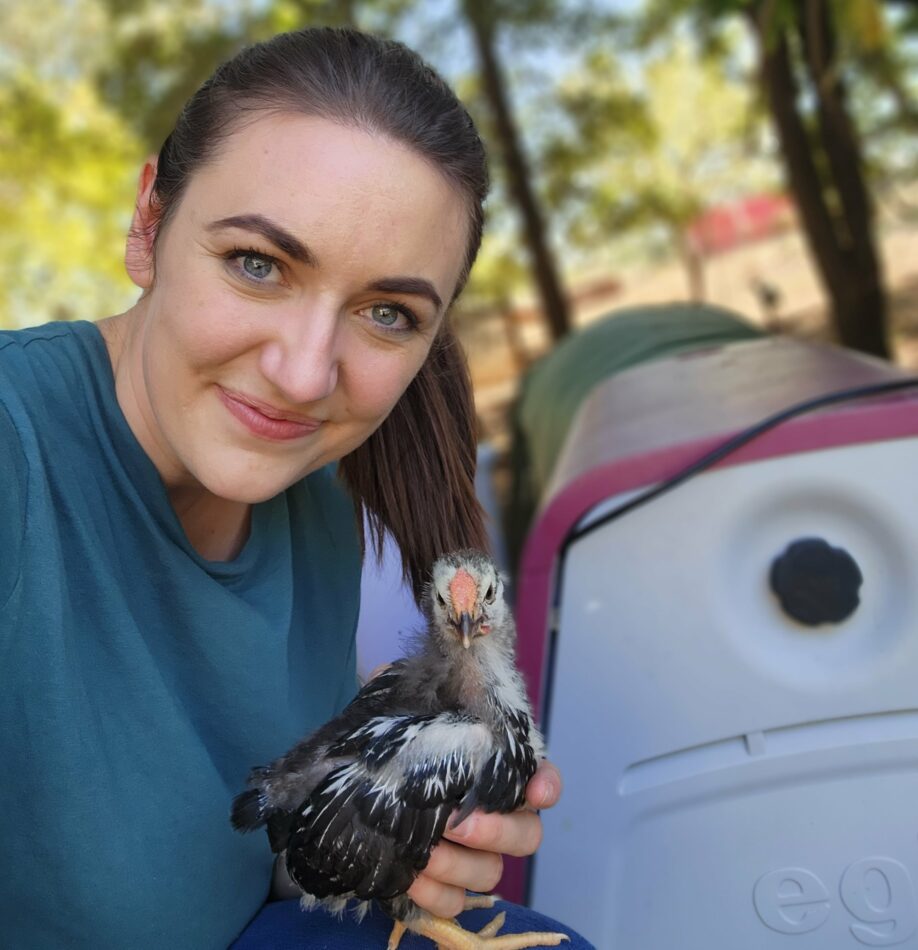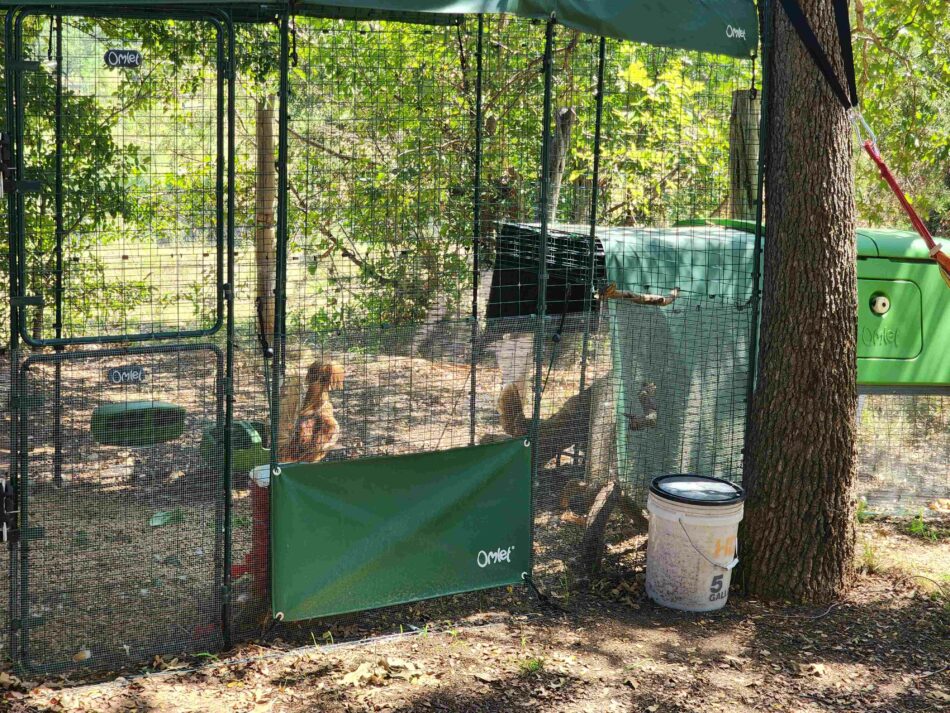A first-hand look at raising chicks in the autumn – part 1
Hey y’all! My name is Alyssa Holland, and I live on a small hobby farm in north-central Texas. We have all kinds of animals on our farm: horses, goats, a miniature pig, rabbits, guinea pigs, dogs, cats, fish, and of course — chickens! We have around 25 chickens currently, and tend a mixed flock of many different breeds. Most recently, we’ve added a rescue pigeon to our flock that thinks she’s a chicken!
As a small hobby farmer, springtime has always been my favourite season – animals being born, flowers blooming, warmer weather, and of course, new chicks! So when I thought about raising chicks any other time of the year, the idea seemed very foreign and honestly, intimidating. But as it turns out, it’s one of the best-kept chicken keeping secrets! I’ll give you a firsthand look at raising chicks in the autumn, and why so far it’s been a much easier and more enjoyable experience than I ever imagined.
Why I chose to raise chicks in the autumn
Spring is the natural season for all things new. On our small farm, our goats, rabbits, and chickens usually have their babies this time of the year. Animals instinctively know when is the best time to raise their young, but where we live, late spring and anytime in the summer can be unyielding in both temperature and weather. We live in north-central Texas, and it’s not uncommon for us to reach the triple digits in Fahrenheit by June. And, spring is primetime for severe weather like hail storms and heavy rainfall.
When I started thinking about setting up a brooder in the autumn instead of the spring, I immediately noticed several advantages over springtime chick-rearing:
- The brooder temperature can be kept much more stable with the cooler ambient temperatures
- Humidity levels are lower, making the brooder much less stuffy and smelly
- Outside visits are easier without excessive heat or rainfall
- I’m not a sweaty mess after cleaning the brooder and handling my chicks!
Autumn brings a collective sigh of relief to everyone on our farm – a welcome respite from the sweltering summer heat. But it’s also a time when the plants that managed to survive the summer go into their dormant phase, daylight hours dwindle, and there’s an overall sense of stillness that settles over the property. It’s not entirely unpleasant, but after two seasons that teem with life, autumn can be a foreboding of winter (which no one around here enjoys!). So, the thought of having chicks to raise throughout this season of transition seemed like the perfect way to incorporate new energy into a world that seems like it’s falling asleep.
Where I found chicks this time of year
We have a large flock with multiple roosters, so oftentimes I will incubate our eggs and hatch chicks in our schoolroom. It makes for a great biology lesson for my first grade and pre-k children! But, in our experience, we end up with a large yield of roosters from our home-incubated batches. We have to find homes for them, and listen to the cacophony of competing roosters every morning…and afternoon, and evening. I love a good cock-a-doodle-doo in the morning, but not all day every day! So, for this batch of chicks, I reverted to my old standby to purchase pullets (sexed hens) to avoid accumulating more roosters.
My go-to for chicks is local feed stores – specifically our Tractor Supply Company. They know me there (on a first-name basis!) and they consistently have a healthy variety of chicks during their “chick days” in the spring. To my surprise (and delight), this year I noticed they still had chicks well into late summer when ordinarily they stop ordering chicks around mid to late June. I asked the staff members, and was informed that they would keep stocking chicks through the end of September. Consider my interest officially piqued.
Bringing chicks home
The second week of September I brought home 6 chicks: 3 Plymouth Rocks and 3 Silver Laced Wyandottes. Prior to their arrival, I decided to change up the way I normally set up their brooder. Typically, we keep our brooder pen in our shop, but with our weather still being warm I was concerned that it would get too hot and stuffy. So, along with trying my hand at raising chicks in the autumn, I decided to go a different direction with their brooder.
I have an Eglu Go with the attached run that I’m using as their brooder. Omlet doesn’t recommend placing chicks under 12 weeks old in their coops, so I’m definitely using this product “off label”. I did make the following modifications to make it small-chick friendly:
- Left out the roosting rack to accommodate small feet
- Because of their small size, I wrapped the run in aviary netting
- I’m using a brooder plate instead of a heat lamp so that the coop doesn’t get too hot
- Use a run cover to shield from rain
- Placed in an area where our outdoor cats and livestock guardian dog can patrol for predators
So far, it’s worked wonderfully for my purposes. My chicks have plenty of space, are able to interact with nature, and aren’t reliant on me to take them on outdoor excursions. I realize this isn’t an option for everyone, so I’ll share what type of activities my chicks enjoy while they’re outside of their brooder for those that take their brood out for daily visits.
Outings and activities with your chicks
I chose pullets that were already 3-4 weeks old – they just looked so sad being the biggest in their brooder with other shoppers going home with their smaller, fluffier counterparts! But, as our temperatures can fluctuate wildly this time of year, I decided that starting out with chicks that are a bit older would be beneficial for 3 reasons:
- They can go outside sooner and enjoy outdoor excursions
- Because of their size and agility, they’re less likely to be threatened by one of our main autumn foes: snakes
- Older chicks can be handled more than newly hatched chicks
At about a month old, my chicks love exploring the grass, leaves, dirt, and insects they can find during their outings in the Eglu Go run. With the roosting rack absent, they can hang out inside of the Eglu Go during these excursions — which also gets them accustomed to going inside of a coop. No matter what type of outdoor playpen or run you set up for your chicks, make sure it’s fully covered, and that any openings aren’t large enough for your chicks to slip through.
Some supplemental things I’ve added to the run for additional fun include:
- Tree branches for climbing over and under
- “Practice perches” repurposed from an old bed headboard – the rungs are perfect for little feet to practice gripping
- Piles of leaves to scratch in
- An area for dust bathing
- A repurposed pallet to lift food and water up off of the ground to keep it free of dirt and debris
Our temperatures have stayed in the mid to low 90s during the day, so chicks this age can tolerate several hours outside without a heat lamp. Their run is covered, and is in a shady place under our wisteria vines to keep them out of direct sunlight.
Planning for their futures
The chicks will eventually call our Eglu Cube and attached walk in chicken run, or our homemade chicken coop home once they’re 12 weeks old. While they mature, we will evaluate their personalities and see which flock they will best fit in with. I’m excited to share their journey from chicks to pullets, and their transition from brooder to permanent home!
By: Alyssa Holland
This entry was posted in Chickens

